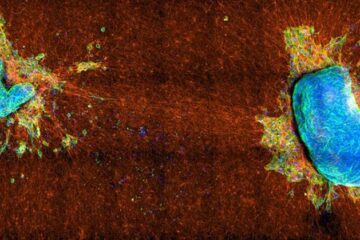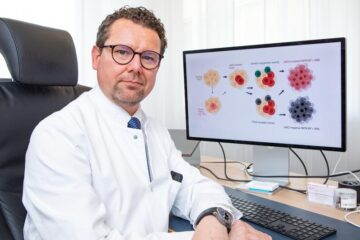Defect in gene causes ’Neuralgic Amyotrophy’

Neuralgic Amyotrophy is a painful disorder of the peripheral nervous system. This heritable disease causes prolonged acute attacks of pain in the shoulder or arm, followed by temporary paralysis. Researchers from the Flanders Interuniversity Institute for Biotechnology (VIB) connected to the University of Antwerp, have uncovered a small piece of the molecular puzzle of this disease by identifying the defects in the gene responsible for this disorder.
Neuralgic Amyotrophy, a painful disorder of the nervous system Hereditary Neuralgic Amyotrophy (HNA) is characterized by repeated attacks of pain in a shoulder, arm, and/or hand, followed by total or partial paralysis of the affected area. The pain and the loss of movement usually disappear within a couple of weeks, but sometimes recovery can take months or even several years. Many HNA patients also have particular facial features, such as eyes that are somewhat closer together, a fold in the upper eyelid that covers the inside corner of the eye, and sometimes a cleft palate.
HNA is a relatively rare disorder: the disease appears in some 200 families worldwide. There is also a non-hereditary form of HNA, called the Parsonage-Turner Syndrome. The clinical picture of this more frequently occurring form – 2 to 4 cases per 100,000 persons – is not distinguishable from that of the heritable form.
The attacks of pain are usually provoked by external factors such as vaccination, infection, operation, and even pregnancy or childbirth. By virtue of their genetic predisposition, carriers of the hereditary form of HNA run greater risk of having an attack. Its re-occurrence, and the fact that the disease is provoked by environmental factors, make this disorder unique in the group of peripheral nervous system disorders. Therefore, HNA is a genetic model for more frequently occurring disorders such as the Parsonage-Turner Syndrome and neurological disorders like Guillain-Barré Syndrome.
Genetic cause of HNA discovered
VIB researchers in Antwerp, under the direction of Vincent Timmerman and Peter De Jonghe, have discovered the genetic defect that underlies HNA. In this effort, the researchers, connected with the University of Antwerp, have been working with colleagues from the universities of Munster (Germany) and Seattle (USA).
The researchers studied several large families and identified the gene responsible for the disorder. They have now shown that HNA is linked to the long arm of chromosome 17, and they have found mutations or alterations in the genetic code of the Septin 9 protein in the patients being studied. HNA is the first mono-genetic disorder caused by a defect in a gene of the Septin family.
The researchers do not yet know exactly how Septin 9 functions in the peripheral nervous system or why mutations give rise to HNA. They do know that other members of the Septin family are involved in the cell division that forms the cytoskeleton and in the development of tumors. The fact that mutations in Septin 9 prevent cell division from occurring properly can perhaps explain why so many HNA patients also have facial abnormalities.
The first step toward treatment?
Today, no effective therapies yet exist to retard or prevent the progress of Neuralgic Amyotrophy. The current treatment is merely supportive. The findings of the researchers in Antwerp are a first essential step in the development of a specific treatment. Now that they know the gene involved, scientists can acquire more insight into the molecular processes of this disease, which may ultimately lead to a therapy.
Media Contact
More Information:
http://www.vib.beAll latest news from the category: Life Sciences and Chemistry
Articles and reports from the Life Sciences and chemistry area deal with applied and basic research into modern biology, chemistry and human medicine.
Valuable information can be found on a range of life sciences fields including bacteriology, biochemistry, bionics, bioinformatics, biophysics, biotechnology, genetics, geobotany, human biology, marine biology, microbiology, molecular biology, cellular biology, zoology, bioinorganic chemistry, microchemistry and environmental chemistry.
Newest articles

Study sheds light on cancer cell ‘tug-of-war’
How cancer cells tug against each other determines whether they can migrate elsewhere in the body. Understanding how cancerous cells spread from a primary tumor is important for any number…

Latest generation of self-dissolving stents
Magnesium implants support coronary arteries and keep them open. Constricted coronary arteries harbor dangers: Because the heart is not supplied with blood properly, this can lead to pain, cardiac arrhythmia,…

Stopping blood cancer
The MHH joint project TARGET-MPN is investigating why the disease persists and progresses in malignant bone marrow diseases from the group of myeloproliferative neoplasms despite targeted treatment. Haematopoietic stem cells…





















